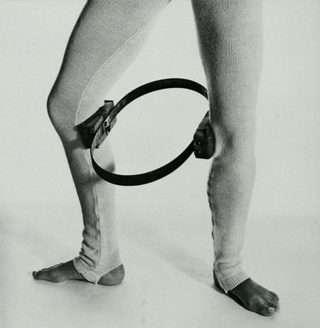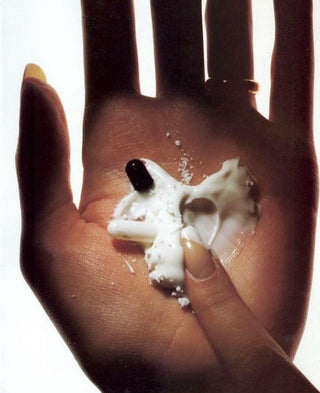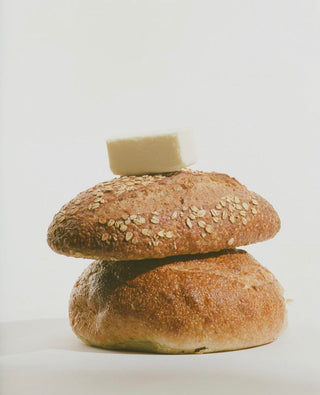
By: @ericabassowellness
Our relationships are an important piece of our overall health and wellness. They shape our psychological well-being, can lower levels of anxiety and depression, and create a longer life-span. Along with the many benefits that come with a healthy and supportive partnership, conflicts do inevitably arise. Research has shown that conflict in relationships is not inherently problematic, nor is it to be avoided. Your behaviors while in conflict can either be healthy or destructive and are likely informed by your attachment style.
Essentially, attachment style is a theory that explains how we formed a particular style of attachment to our caregiver in our early childhood in response to the degree in which our needs were consistently met. Your attachment style reflects the level of anxiety or avoidance you experience in relationships. Think about a recurring conflict you experience with a current or past partner, then read below to discover which attachment style you (and your partner) may fit into.
Anxious Attachment Style
You crave closeness with your partner and have the capacity for deep intimacy.
A common fear may be that your partner can’t meet your desired closeness.
Relationships take up a lot of your energy, you tend to be sensitive to minor changes in your partner’s moods and behaviors, often taking them personally.
You are easily upset and experience a lot of negative emotions (i.e. jealousy, fear, insecurity, anger, paranoia, etc).
You tend to act out and say things you later regret.
This style may stem from a lack of presence from your parents or caregivers in your developmental years, resulting in an “emotional hunger” for the parent. As a result, you may struggle with self esteem and have strong emotional needs. To cope with the fear of abandonment, you may demand assurance from your partner often. At the root of this conflict is the need to self regulate, be less dependent, and to derive esteem from oneself. If paired with a partner who has a more avoidant attachment, you may encounter the common pattern of “push-pull”. The more you seek closeness from your partner, the more your partner will pull away due to their own attachment fears, subsequently causing you to push for more closeness.
Avoidant Attachment Style
Your independence and self-sufficiency is most important for you in relationships
You may prefer your autonomy over intimate relationships
Too much closeness in a relationship is uncomfortable and you keep your partner at arm’s length
In relationships, you are on high alert for any signs of control by your partner
You tend to avoid opening up emotionally to your partners and you also don’t fear being rejected
This style likely stems from parents or caregivers who were unable to consistently attune to your needs. The physical needs may have been met, but not the emotional ones. The child learns to not trust the parent and develops an overreliance on themselves to meet their own needs. You may have a desire for closeness but your fear of emotions and engulfment will create avoidant behaviors, ultimately sabotaging your goals to create intimacy. Your mixed messages may be confusing to a partner and your partner may complain about you being emotionally distant. At the root of this conflict is the need to understand your triggers, increase awareness of the body while triggered, and to slowly practice getting close to someone. If you are with a partner that has an anxious attachment style, you may often feel suffocated by their needs for intimacy. Your fears will lead you to withdraw as a means to cope, often leading to more conflict in the relationship.
Secure Attachment Style
You’re comfortable with vulnerability and are usually warm and loving to your partner.
You don’t see conflict as a threat and are able to communicate clearly while in conflict.
You are able to set and maintain appropriate boundaries
You aren’t afraid to invite people into your life
Your parents or caregivers were able to manage their stress while also consistently engaging with you and meeting your needs for soothing when distressed. While not perfect, you generally feel safe and stable. You don’t fear being alone and can also thrive while in relationships. While in conflict with a partner, you remain hopeful and trusting.
Identifying unmet needs you have from your parents or caregivers and your associated attachment style can provide you with meaningful insight around breaking patterns of conflict in your relationships. Understanding your attachment style can also increase self-compassion and it can be used as a guidepost to work towards more secure and satisfying relationships. It’s important to note that there is not a “good” or “bad” attachment style to have and that your style is not fixed. By choosing a safe relationship with a secure partner and/or working through your triggers in therapy, you can begin to move past the self protective mechanisms that you learned in childhood and form a secure attachment to your partner.
This article cannot cover the nuances of each style, so if you’re curious to learn more you can discover your attachment style in Attached: The New Science On Adult Attachments and How it Can Help You Find and Keep Love by Amir Levine. Working with a licensed psychotherapist can also help you move past your attachment wounds and find more satisfaction in your relationships, especially if you have a history of trauma.
Erica Basso is a Licensed Marriage & Family Therapist practicing statewide in California. She helps guide women in overcoming anxiety, perfectionism, and relationship challenges. Learn more at www.ericabassotherapy.com
References:
https://www.frontiersin.org/articles/10.3389/fpsyg.2015.00296/full
https://www.frontiersin.org/articles/10.3389/fpsyg.2021.717164/full
https://www.ncbi.nlm.nih.gov/pmc/articles/PMC4845754/
Ainsworth, M., Blehar, M., Waters, E., & Wall, S. (1978). Patterns of attachment: A psychological study of the strange situation. Hillsdale, NJ: Erlbaum.















